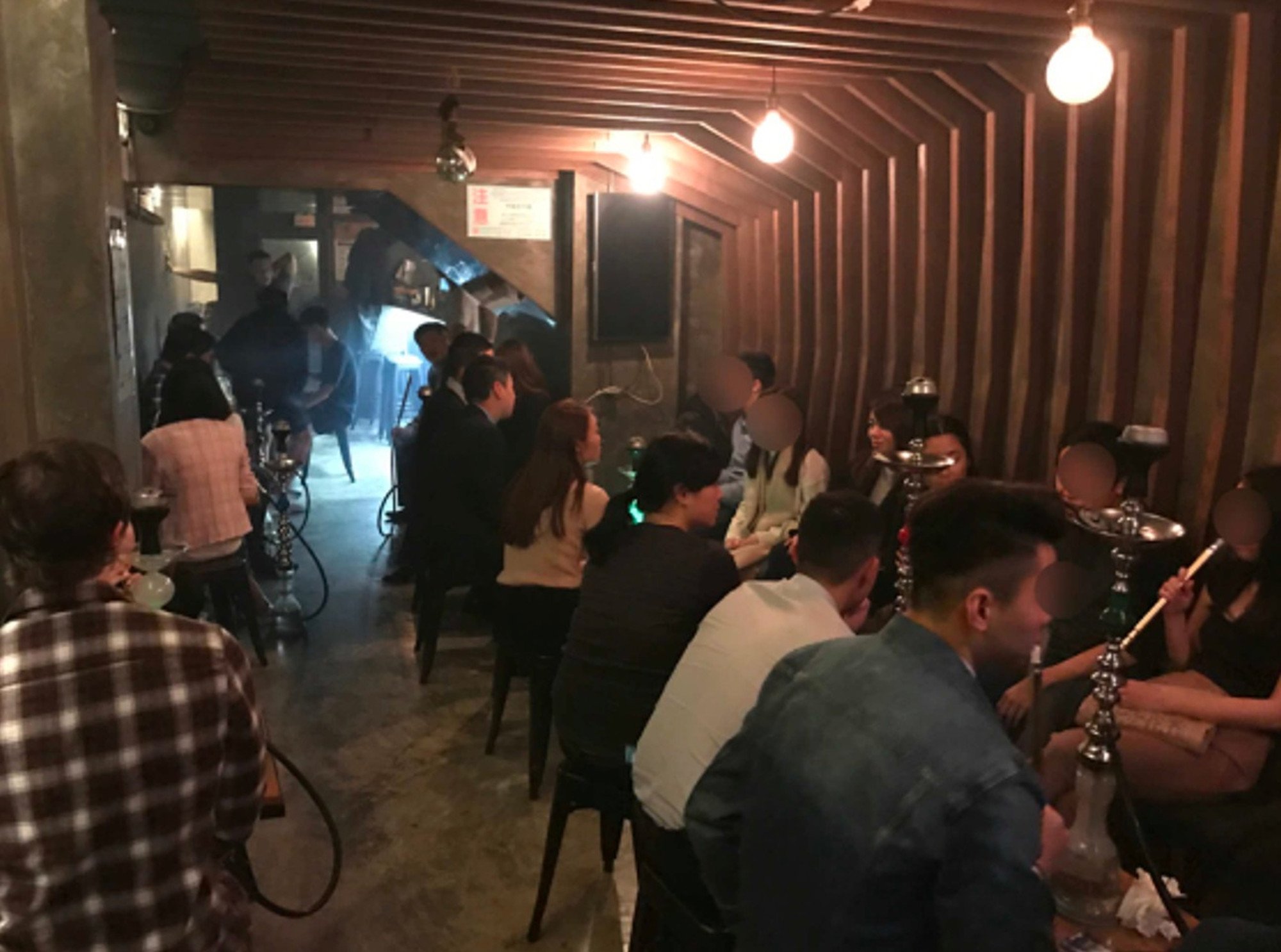Poor-quality air inside some of Hong Kong’s shisha bars has been found to contain dangerous levels of cancer-causing particles, despite indoor smoking having been banned for nearly two decades.
The discovery prompted health experts to step up support for a government proposal to outlaw flavoured tobacco products, calling it a “golden time” for the city to curb the use of the water pipes, for which the health impacts were often underestimated by the public.
Unpublished research led by Dr Jay Lee Jung-jae of the University of Hong Kong (HKU) found the concentration of tiny PM2.5 particles, a type of carcinogen, could reach as much as 2,300 micrograms per cubic metre of air in some shisha bars in the city on weekends.
Lee, an assistant professor at the university’s nursing school, said the “alarming” findings added weight to the arguments behind the ban on targeted tobacco products, if not all, on top of many studies on the health risks of shisha smoking.
“The findings showed that indoor smoking is still allowed in some shisha bars, bringing first-, second- and third-hand smoke … not only to smokers but also to other bar-goers, staff, passers-by and nearby businesses,” he said.
“This is a very strong public health warning … we need to have more comprehensive regulations to control water pipe smoking, and banning flavours is an important step to reduce the prevalence.”
The city’s smoking rate stood at 9.4 per cent in 2023, of which less than 0.1 per cent used shisha every day. About 100 restaurants and bars in the city offer shisha smoking.
The activity is particularly popular among young people, especially women, with about a quarter of university students saying they had tried it in a 2020 HKU study.
The wide variety of flavours was found to be a major attraction, followed by the social element.
Researchers in the latest study collected indoor air samples from eight shisha bars in Central, Tsim Sha Tsui, Causeway Bay and Wan Chai on both weekdays and weekends, with each visit lasting two hours. Many customers were seen smoking shisha indoors.
They also collected air samples from six regular bars as a control group.
The concentration of PM2.5 detected in the eight shisha bars ranged from 178 to 2,368mcg/cubic metre, while in regular bars the level was between 12 and 140.
The World Health Organization lists two guidelines for safe exposure to PM2.5 particles – an annual average of 5mcg/cubic metre and a 24-hour average of 15mcg/cubic metre.
Hong Kong’s environmental authorities have set the standard at 25 and 50 respectively.
The Australian government is one of the few to include an hourly average standard, which is set at 50mcg/cubic metre.

Lee said other carcinogenic substances, including benzo[a]pyrene and formaldehyde, were also found in the samples.
“We are very successful in cigarette smoking control … but the Hong Kong government pays less attention to water pipes,” he said.
He noted laws did not explicitly refer to water pipes, with required warnings often not displayed to users, as they would never see the packaging.
Public education efforts were also insufficient, resulting in common misconceptions that the activity was less harmful to one’s health than smoking regular cigarettes, he added.
Lee said the studies he conducted in recent years showed enforcement efforts were lacking in the fight against illegal business practices in shisha bars, such as indoor smoking, on-street promotions and the smuggling of goods.
But he said he believed a ban on flavoured products could reduce the demand for shisha, as the flavours had been a major draw for smokers.
“This is a golden time for us to impose more control on water pipe smoking, when not many people are addicted to it and can easily quit the habit,” he said.
“Banning flavoured tobacco would be a good start. Although Singapore imposed a total ban, we could still be one of the exemplary cases in water pipe control and be a leader globally.”
He said the government could introduce a one-year transition period to mitigate the impact on businesses, but the ultimate goal should be a total ban.
He also warned against the marketing traps of “healthier shisha” products that were nicotine and tar-free.
“There are a lot of toxicants in water pipes … and smokers do not just light it up for a few minutes, but rather at least an hour each session.”

Chin Chun-wing, chairman of the Hong Kong Bar and Club Association, said most bars in the city were law-abiding due to the high cost of penalties and the risk of being unable to renew their liquor licence.
But it was possible for some unlicensed bars to engage in illegal smoking practices, he added.
“Even if the government imposes a blanket ban, young people can’t quit the habit immediately without sufficient education on the harms of shisha,” he said.
“Instead, they might be driven to smoke it across the border, or at unlicensed or unsafe and unventilated private venues where they will be exposed to even more serious air pollution – and those venues are barely inspected.”
He favoured a two-year transition period for the ban, but with some flexibility allowed for outdoor smoking of flavoured shisha.
The city’s tobacco control office said it carried out 68 operations in the past 12 months, resulting in fines of HK$1,500 (US$190) to 130 people for smoking water pipes indoors and summonses for 74 bar operators.
It also issued 59 summonses to operators for aiding and abetting water pipe smoking offences between 2020 and May 2024, with penalties of between HK$400 and HK$4,000 for convictions.
The Customs and Excise Department arrested 32 people in connection with 46 smuggling cases related to “other manufactured tobacco”, which included water pipes, in the first half of the year. Officers seized 14 tonnes of products with an estimated market value of HK$86 million and a potential HK$52 million in unpaid duty.
Customs arrested 34 people in connection with 71 cases last year, seizing more than 30 tonnes of “other manufactured tobacco” with an estimated market value of HK$137 million and a potential HK$89 million in unpaid taxes.


